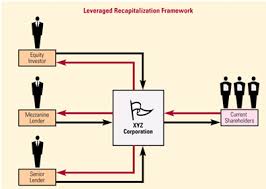Introduction
The main objective of private equity investors is to realize the return on the investments that they have made in a private company after a certain point of time, desirably between three to seven years after the initial investment transaction took place. This return on investment, i.e., profit on their investment can be realized only when the investor successfully exits from a private company, which can be achieved only when a private investor can seek a potentially profitable opportunity to devise a successful exit route from the company with the maximum possible profits on their investments. Furthermore, the number of successful exits that a company has been able to achieve has a considerable influence on the private company’s ability to attract investors and raise funds.
Exit Strategies
This article is an attempt to explain the various exit strategies that an investor can use to realize a substantial amount of return on their investment successfully. There are mainly four exit strategies that an investor can use. They are discussed below.
Initial Public Offering (IPO)
This is one of the most common exit strategies. IPO, which is also called ‘flotation’ or ‘listing,’ it is the strategy through which the company’s shares get listed on the stock market as a part of IPO to the public so that the investor will be able to share his shares to the public. This is one of the most popular exit strategies because when the market conditions are conducive, this strategy will enable the investor to realize the maximum return on their investment. Once the company gets listed on the stock market, the investor can immediately start selling shares as the shares start trading on the stock exchange.
However, the floating of shares does not automatically mean an exit for the investor. The investor will only be able to exit his investment when his shares get sold on the stock market, which is highly unlikely to happen immediately. This puts the investor in a vulnerable position for some time as he will be exposed to a fluctuating market and other market risks for a certain period after the IPO is carried out. Moreover, IPO is subject to stringent regulatory requirements and involves various costs which make IPO a lengthy and expensive process. That is why IPO as an exit strategy is only feasible for very large companies that can bear the costs.
Trade Sale
While employing this strategy, the investor sells all his shares held in a private company to a third party, conveniently working in the same industry as the company itself. The biggest advantage brought about by this strategy is that it guarantees profits for the investor as they can realize their investment almost immediately, unlike IPO, where the investor might not be able to sell his shares for some time (lock-up period). Therefore, a trade sale provides the investor with a complete and immediate exit from the investment. This method is greatly preferred by the investors because the investor can exercise a substantial amount of control over the whole process enabling him to negotiate with the buyers allowing for a quick and efficient transaction. The investor can even end up obtaining a higher value for the company as compared to other exit routes. Furthermore, a trade sale is not subject to any of the restrictions and regulations applicable to IPO transactions.
Therefore, a trade sale provides the investor with a complete and immediate exit from the investment. This method is greatly preferred by the investors because the investor can exercise a substantial amount of control over the whole process enabling him to negotiate with the buyers allowing for a quick and efficient transaction. The investor can even end up obtaining a higher value for the company as compared to other exit routes. Furthermore, a trade sale is not subject to any of the restrictions and regulations applicable to IPO transactions.
However, the method of trade sale is not devoid of risks. Most often, the management of the company may be averse to the idea of such a transaction as such a transaction could entail a replacement of the management of the company. Furthermore, such a transaction could consequently result in a competitor (who is the buyer) obtaining confidential information pertaining to the business of the company during the process of negotiation before the actual transaction.
Secondary Buyout
In this case, the private equity investor sells its investment in a company to another private equity firm. This ends the first investor’s involvement with the company. This type of a transaction shortens the lifespan of a transaction as the investor who made the original investment might be unwilling to finance the company anymore and might want a quick exit even before the company is ready for a trade sale or an IPO.  This exit strategy seems quite attractive to the investors as it offers instant liquidity. Sometimes, the management of the company could employ this method if they wish to replace the private equity investor financially backing the company. This is because investors or private equity firms bring different perks to the table, such as equity firm might have a better understanding of the industry in which the concerned company conducts its business. This exit strategy too provides an immediate and complete exit and can be carried out faster and more efficiently as compared to an IPO.
This exit strategy seems quite attractive to the investors as it offers instant liquidity. Sometimes, the management of the company could employ this method if they wish to replace the private equity investor financially backing the company. This is because investors or private equity firms bring different perks to the table, such as equity firm might have a better understanding of the industry in which the concerned company conducts its business. This exit strategy too provides an immediate and complete exit and can be carried out faster and more efficiently as compared to an IPO.
Leveraged Recapitalization
This is a type of corporate strategy where the company takes on substantial additional debt to substitute the company’s equity. It is done either for the purpose of paying a large dividend to the shareholders or repurchasing the company’s shares from the investors. This results in an increase in the company’s liabilities and a reduction in its equity. This type of a strategy is a partial exit strategy as the investor can still draw out cash from the company without actually having to sell the company. The investor remains in control, keeps receiving payment and avails possible tax benefits as compared to another type of exit strategies.
The investor remains in control, keeps receiving payment and avails possible tax benefits as compared to another type of exit strategies.
This type of a strategy is often called a ‘shark repellant’ strategy as it is an approach to ward off an attempted hostile takeover. This is done to make the company that is being targeted for the takeover less financially attractive due to the increased debt and reduced equity of the company. However, this strategy comes with the risk of over-leverage which could result in some financial difficulties and even bankruptcy.
Conclusion
Therefore, we see that employing a smart exit strategy within a suitable period can be extremely beneficial to an investor bringing him a sizeable amount of profits.












[…] Additional Read: How can an investor exit private company? […]